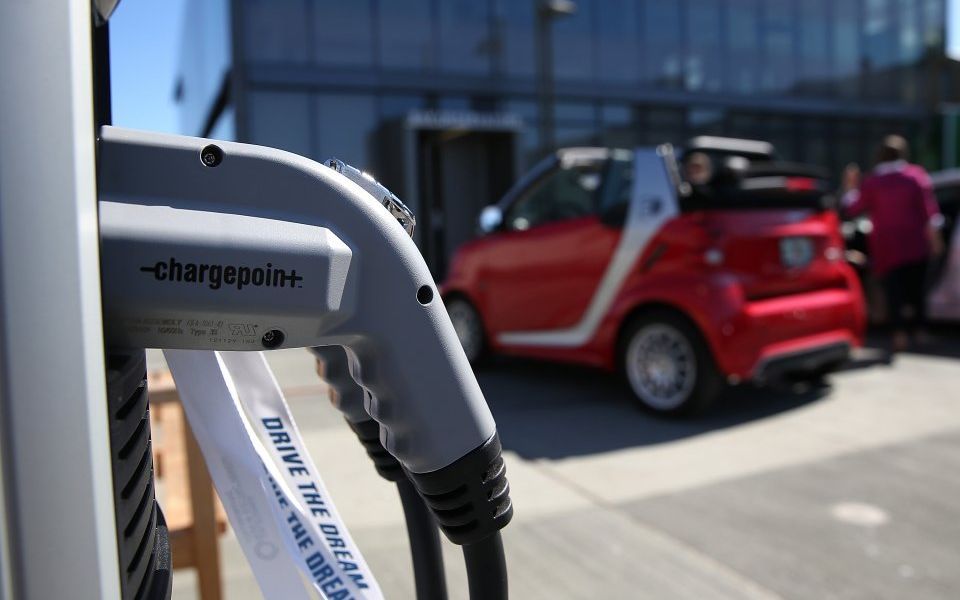US electric vehicle charging giant ChargePoint has called on its competitors to ‘follow suit’ after making the biggest commitment in the company’s history; to deploy 2.5 million EV charging points by 2025.
The company expects to see the chargers, representing growth in its global network of almost 50 times more than its current level of deployment, deployed evenly between the US and Europe, with some others in Australia and New Zealand.
It is intended this will meet the needs of a forecast 37 million EVs that will be on the road globally by 2025.
ChargePoint launched its European business in May 2017, partnering with Instavolt in the UK to deploy 50kW DC chargers. It has since signed other supply deals with ABM UK and Fulcrum, as well as launching in other European markets.
Over the next seven years, the company hopes to replicate the success it has enjoyed in the United States, where ChargePoint has 70% market share in connected EV charging infrastructure.
During a briefing late last week, president and chief executive of ChargePoint Pasquale Romano told Current± that the UK offers “a very exciting market” for its growth plans, particularly following the recent Zero Emissions Vehicle Summit.
“We see the UK as a very fast moving market, we see the government leaning in to really try to decarbonise transportation for many reasons. So the right activities and the right discussions are happening and frankly, it has some long-standing great investment. There have been lots of government programmes for home chargers.
“If you look at a lot of what Transport for London is trying to drive through, you’re seeing electrification of black cabs, conversations about eliminating fossil fuel vehicles from congestion zones in London. I actually think the UK is a very exciting market,” he said.
Adding that discussions with the UK’s different local governments were also improving, he said that while the company is seeking to lead the market for EV chargers, others must take up the challenge of setting short term goals for deployment.
“The hardest part of this transition for the transportation industry is the early years [with] the least maturity in vehicles, grid and charging infrastructure. So we’re trying to establish a call to action…and if we can hit that goal we almost ensure we can hit the later ones,” Pasquale continued.
“We’re hoping that everyone in our industry follows suit, this is something that is going to take more than ChargePoint to accomplish but we’re absolutely committed to doing our part… and if we can get this goal done by 2025, I think it sets the stage for all of us.
“Specifically in the UK market, there are not a lot of players and so the flip side is we need companies in the UK and those that may enter to pull this off because we are trying to do something very significant here as an industry to electrify transportation.
“We feel that the success of the market is going to require all companies like ChargePoint to really pull together and make this happen.”
As the company sets out to deploy around 350,000 chargers a year out to 2025, with around half in Europe, the UK’s charging infrastructure has been a cause of some debate in recent months as fears emerged that the surging number of EVs would leapfrog the number of publicly available chargepoints.
Almost 170,000 electric vehicles, spanning pure-electric, plug-in hybrid, and hydrogen fuel cell, are thought to be active on UK roads currently, as part of more than a million across Europe. In contrast, there are almost 19,000 publicly available chargers installed according to the database website Zap-Map.
However, in January 2018 the Department for Transport confirmed that 85,000 domestic chargers had been installed, a figure that is likely to be considerably higher now following the surging popularity of EVs that has been seen this year, with one in 12 buyers purchasing an EV.
Chargemaster, the UK’s current market leader and recently purchased by BP, expects there to be around 70,000 charging points both on UK roads and at destinations by 2020, rising to over 500,000 by 2030 as the market keeps pace with EV adoption.





